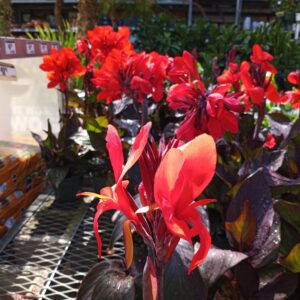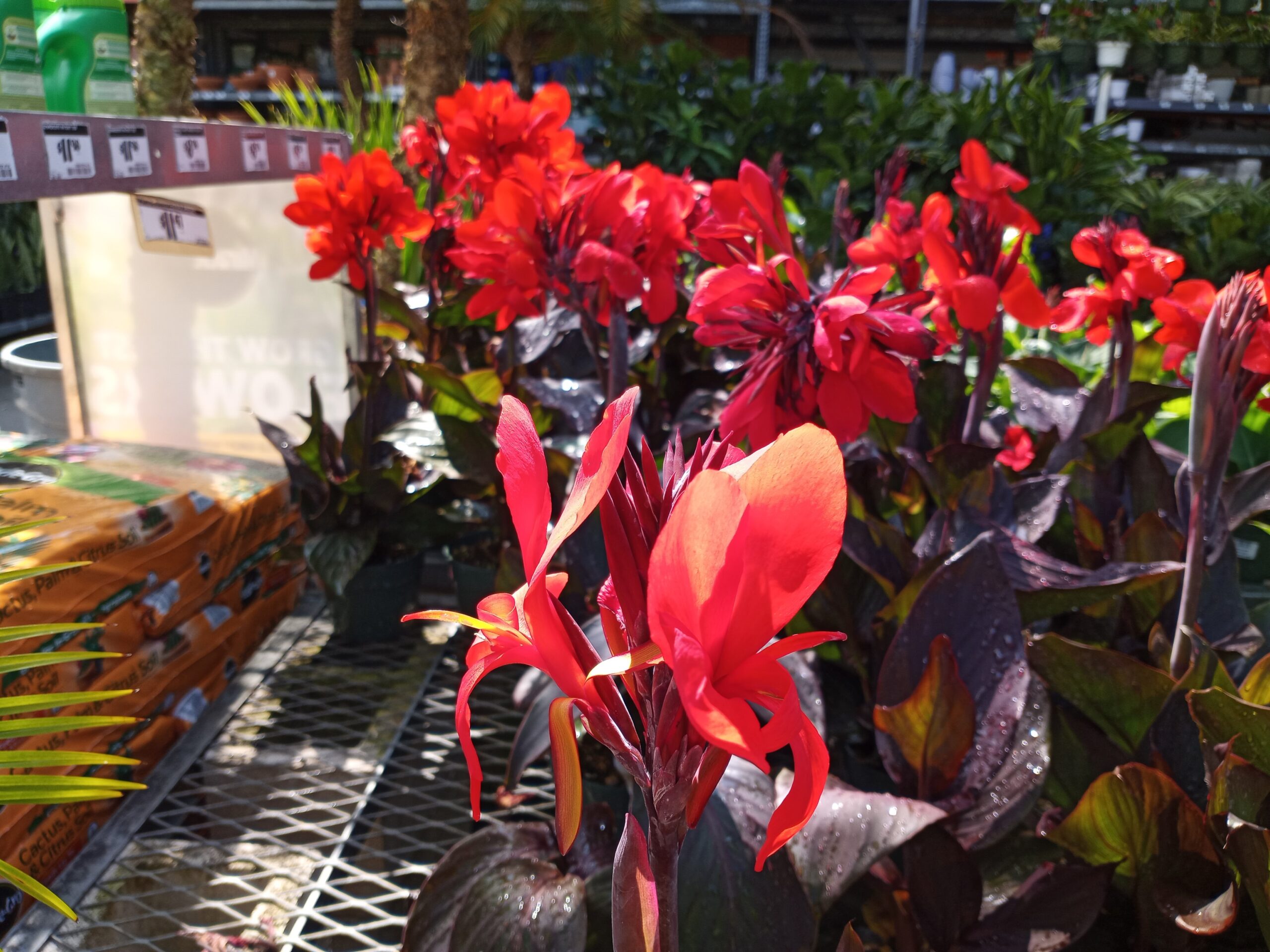Cannas are not true lilies and its closest relatives are gingers, bananas, heliconias and the bird of paradise. Cannas are thirsty plants and need a consistent supply of water and in warm areas grow well in full sun or partial shade. Cannas are gardeners’ favorite plants because of their gorgeous blooms and good nature safe around pets and children since they aren’t poisonous.

Cannas are tropical and subtropical plants resulting in a lovely array of showy, large flowers in shades of yellow, orange, red and pink. Canna is the only genus consisting of 10 species and are native to semi-tropical and tropical parts of North and South America and extends from South Carolina south to Argentina and Caribbean Islands.
In certain cultures canna is a valuable food source and has been cultivated as a food crop for over 4,000 years in central and South America. Cannas boast their paddle shaped leaves and leafstalks in shades of green, purple and variegated colors and gorgeous blooms that stand tall and thrive all year in tropical climates. Cannas grow up to 4 to 10 ft. There are several varieties: Apricot dream, Brilliant, Amabilis, Bengal Tiger, Bangii, Cleopatra,Coccinea, Discolor, Flacida, Glauca, India Shot, Iridiflora, Jaconibiaflora, Liliflora, Madame Crozy, Pretty butterfly, Firebird and the Red Scarlet.
Cannas lily is very sensitive to frost and will survive only in 8-11 zones and Hawaii is zone 11. In cooler areas Canna lily’s bulbs will have to be dug up before the first frost and stored indoors over the winter in a dry place before replanting in spring.
COW





















